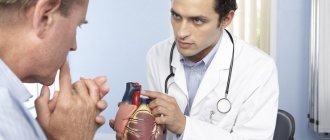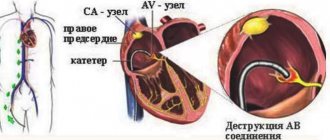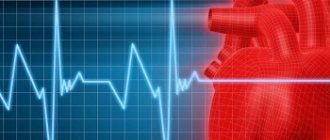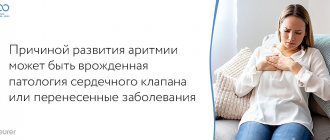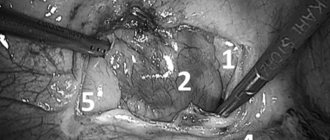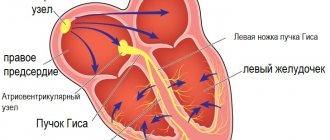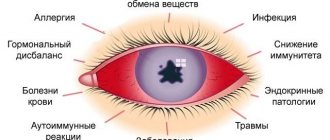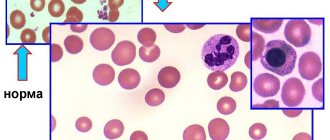Diagnosis of atrial fibrillation (atrial fibrillation) is based on an electrocardiogram (ECG) recording. Sometimes atrial fibrillation is asymptomatic and detected by chance, for example, when an ECG is recorded with a prof. examination or during hospital treatment for another disease. However, most often the patient consults a doctor with complaints of interruptions in the functioning of the heart, attacks of rapid, uneven heartbeat, which may be accompanied by weakness, shortness of breath, sweating, dizziness, a feeling of “internal trembling,” pain in the heart and low blood pressure. When an attack occurs suddenly, you should definitely consult a doctor or call an ambulance. It is very important that the ECG recording is made precisely during the attack
–
the doctor will be able to accurately determine the nature of the arrhythmia, make a diagnosis and prescribe the correct treatment.
Read more about the causes and symptoms of atrial fibrillation here
If attacks occur quite often, but cannot be “caught” on a regular ECG, the patient is referred for 24-hour ECG monitoring (Holter, Holter monitoring). Within 24 hours (or more, depending on the device), the patient’s ECG is recorded and electronically recorded with a special palm-sized device that the patient carries with him. The recording is processed on a computer, and if the patient experiences arrhythmia attacks during the examination, they will be recorded and documented. The doctor will receive all the necessary information.
It may happen that no attack occurs during Holter monitoring. Repeated research will be required, and so on until ari. If attacks occur rarely, this is very difficult to do. In such cases, the doctor may recommend a test that can provoke an attack - transesophageal atrial stimulation (TEAS). When performing PPSP, a thin electrode is inserted through the patient's nose into the esophagus, which is installed at the level of the atria and, using a special device, allows electrical impulses to be applied to the heart. When paroxysmal AF occurs, an ECG is recorded, then sinus rhythm is restored. PPSP is carried out only in a hospital, in special departments specializing in the treatment of heart rhythm disorders.
Paroxysm of atrial fibrillation - what to do?
If you experience an attack of uneven rapid heartbeat for the first time, you should immediately consult a doctor or call an ambulance. Even if you feel good. Remember - it is very important to record the attack on the ECG. The attack may end on its own after some time, but it is necessary to restore the correct rhythm within the first two days. The more time passes from the onset of paroxysm, the more difficult it is for the heart to restore normal function and the higher the risk of blood clots forming in the chambers of the heart. If more than two days have passed since the onset of the attack or you do not know exactly the time of its occurrence, it is necessary to restore the heart rhythm only under the supervision of a doctor after examining the heart chambers with echocardiography, echocardiography (to exclude already formed blood clots) and special preparation with blood thinning drugs (to prevent thrombosis).
If paroxysms of atrial fibrillation (atrial fibrillation) occur frequently, you need to work with your doctor to develop a plan for your actions during an attack. If the arrhythmia is well tolerated and during short (no more than 24 hours) attacks of arrhythmia, which often end on their own, no special actions can be taken. It is necessary to continue taking the medications recommended by your doctor without changing the dose. If an attack occurs, your doctor may recommend a one-time dose of an antiarrhythmic drug in addition to basic therapy or a temporary increase in the dose of medications you are already taking. If during a paroxysm of atrial fibrillation your health worsens significantly, or the arrhythmia continues for more than a day, you must consult a doctor.
What is “better” – attacks or constant atrial fibrillation (atrial fibrillation)?
For a long time, doctors believed that the only optimal result of treatment was the restoration of correct, sinus rhythm. And now, in most cases, the doctor will advise you by all means to restore and maintain sinus rhythm. However, not in all cases. Studies have shown that if it is impossible to effectively maintain restored sinus rhythm (when the heart constantly “breaks down” into atrial fibrillation), permanent atrial fibrillation (atrial fibrillation) with drug control of the heart rate of about 60 beats per minute is safer than frequent paroxysms of atrial fibrillation (especially prolonged ones, requiring the administration of high doses of antiarrhythmic drugs or electrical impulse therapy).
The decision on the advisability of restoring sinus rhythm or maintaining a permanent form of atrial fibrillation is made by the doctor. In each case, such a decision is individual and depends on the cause of the arrhythmia, the disease against which it arose, its tolerability and the effectiveness of the treatment for atrial fibrillation carried out to maintain the correct rhythm.
An attack that lasts more than two days must be treated only under the supervision of a doctor, after special preparation. If sinus rhythm is successfully restored, the doctor will adjust ongoing antiarrhythmic therapy and recommend taking blood thinners for at least a month after cardioversion.
Why does arrhythmia appear?
Sinus rhythm or regular sequential contraction of the myocardium is ensured by the conduction system of the heart. Its structure includes:
- sinus node (pulse generator);
- atrioventricular node (conducts impulses to the ventricles and ensures contraction of the atria);
- bundle of His and other small structures (provide contraction of the ventricles).
Any disturbances at the level of the conduction system of the heart provoke discoordination of myocardial tone and disruption of sinus rhythm.
Arrhythmia can be an independent problem or a consequence of another disease. Heart rhythm disturbances can cause angina attacks, vascular thromboembolism, failure of function and even cardiac arrest. According to statistical data, up to 15% of deaths from cardiovascular pathologies occur due to severe rhythm disturbances.
The cause of malfunctions of the conduction system may be heart pathology, which is accompanied by organic changes (with ischemic disease, cardiomyopathy, myocarditis, developmental defects) or myocardial damage (as a result of injury or surgery). The mechanism of impulse conduction disorders implies the emergence of functionally inactive tissue that is not capable of conducting electrical energy.
Functional, or inorganic, causes of rhythm disturbances may be as follows:
- stress;
- excessive mental and physical stress;
- smoking;
- abuse of coffee, tea, spicy foods;
- pathologies of the thyroid gland;
- diseases accompanied by fever;
- intoxication;
- diseases of the digestive tract (gastritis, peptic ulcer, pathology of the bladder);
- electrolyte imbalance;
- taking certain medications (diuretics, cardiac glycosides, etc.)
In this case, heart failure is caused by excessive activity of the sympathetic or parasympathetic nervous system, deficiency of macro- and microelements, and the arrhythmogenic effect of drugs.
If you have any questions, call us at: +7 Medical administrators are always ready to advise you.
Treatment of atrial fibrillation (atrial fibrillation)
There are several ways to treat atrial fibrillation (atrial fibrillation) and restore sinus rhythm. These are oral administration of antiarrhythmic drugs, intravenous administration of antiarrhythmic drugs, and cardioversion (electrical pulse therapy, EIT). If the doctor restores the rhythm in a clinic or at the patient’s home, they most often start with intravenous medications, then take pills. The procedure is carried out under ECG control, the doctor observes the patient for 1-2 hours. If restoration of sinus rhythm does not occur, the patient is hospitalized in a hospital. In the hospital, drugs can also be administered intravenously, but if time is limited (the duration of the attack is approaching the end of the second day) or the patient does not tolerate the paroxysm well (a decrease in blood pressure is observed, etc.), EIT is more often used.
Cardioversion is performed under intravenous anesthesia, so the electrical shock is painless for the patient. The success of rhythm restoration depends on many factors: the duration of the attack, the size of the heart cavities (in particular, the left atrium), sufficient saturation of the body with an antiarrhythmic drug), etc. The efficiency of EIT is close to 90-95%.
If paroxysm of atrial fibrillation lasts more than two days, restoring the rhythm is possible only after special preparation. The main steps are taking blood thinning medications under the control of a special analysis (INR) and conducting transesophageal echocardiography (TEE) before EIT to exclude blood clots in the cavities of the heart.
Attacks of atrial fibrillation - how to prevent?
To prevent paroxysms of atrial fibrillation from reoccurring, the patient must constantly take an antiarrhythmic drug. For the purpose of prevention. Today there are many antiarrhythmics; the choice of drug must be made by the doctor. A patient with atrial fibrillation requires observation by a cardiologist, during which regular examination is carried out (for example, echocardiography once a year, or 24-hour Holter monitoring, if necessary, to assess the effectiveness of treatment), and treatment correction. The selection of drug therapy is always, for any disease, a very painstaking task that requires literacy and perseverance on the part of the doctor and understanding and diligence on the part of the patient. Not only the effectiveness, but also the tolerability of treatment can vary from person to person.
The ineffectiveness of drug therapy for atrial fibrillation may be an indication for surgical treatment. In the left atrium (near the confluence of the pulmonary veins) there are zones in which electrical impulses are generated that can trigger atrial fibrillation. Increased electrical activity in these areas can be detected using a special electrophysiological examination (EPI). A special catheter is inserted into the heart cavity, the information obtained allows you to create an electrical “map” and determine trigger (“trigger”) areas. The examination is carried out under local anesthesia and is quite safe for the patient. After identifying the “trigger” areas, an operation is performed - radiofrequency ablation of trigger zones (RFA). The catheter uses high-frequency current to destroy these areas and disrupt the initiation of the arrhythmia. In four out of five cases, atrial fibrillation does not return.
Atrial fibrillation became permanent
In a certain proportion of patients suffering from attacks of atrial fibrillation, sooner or later there comes a time when it is no longer possible to restore sinus rhythm. Atrial fibrillation becomes permanent. As a rule, this happens in patients with significantly increased sizes of the left atrium (4.5 cm or more). Such an enlarged atrium is simply unable to maintain sinus rhythm. With a permanent form, the patient also needs medical supervision.
The goals of treatment are to maintain the heart rate within 60-70 beats per minute at rest, prevent the formation of blood clots in the cavities of the heart and reduce the risk of thromboembolic complications.
Heart rate control is carried out with beta blockers, digoxin or calcium antagonists (verapamil group), selecting an individual dose of the drug according to the principle “the higher the dose, the lower the heart rate.” The titration is completed at the optimal dose, and the patient receives it daily. The effectiveness of heart rate control can be assessed using 24-hour Holter ECG monitoring. If a reduction in heart rate cannot be achieved with pills, doctors resort to surgical methods. An arrhythmologist surgeon isolates the atria from the ventricles and implants a pacemaker, which is programmed for a certain number of heartbeats at rest and adapts to stress.
To prevent blood clots, medications that thin the blood are used, that is, they slow down the blood clotting process. For this purpose, aspirin and anticoagulants (most often warfarin) are used. To date, the approach to the tactics of anticoagulant therapy has been determined on the basis of an assessment of the risk of thromboembolic complications and the risk of bleeding while taking these drugs, and is approved in the National Russian VNOK recommendations (see table).
Many patients are afraid to start taking medications, since the instructions indicate complications such as bleeding. You should know that before prescribing anticoagulants, the doctor always weighs the benefits and risks of drug treatment, and prescribes only when he is completely sure that the benefits significantly outweigh the risks. Strict adherence to recommendations and regular monitoring of blood tests (international normalized ratio (INR) for patients receiving warfarin) plus your awareness of the basic mechanisms of action of the drug and the tactics of your actions at the first signs of bleeding make such treatment completely predictable and as safe as possible.
Table 1
What sensations occur during arrhythmia?
The leading symptoms are irregular, slow or accelerated heart rate, a feeling of interruptions in the heart's function and a feeling of fading. Heart rhythm disturbances cause panic attacks, dizziness, changes in consciousness, sweating and pale skin. Arrhythmia can be constant or manifest itself in attacks lasting from several minutes to several days.
The most common type (atrial fibrillation) is characterized by the following symptoms: chaotic contractions, which are accompanied by sweating, shortness of breath, weakness, trembling, and frequent urination.
